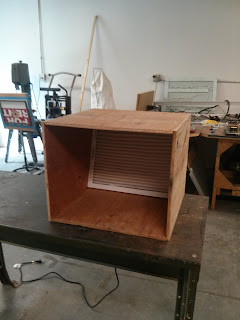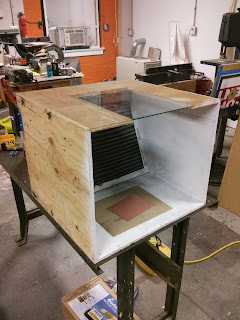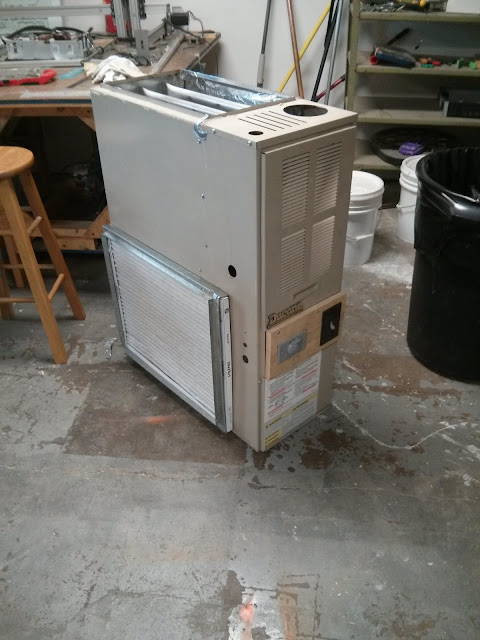So I purchased a powder coating gun from Eastwood through Amazon, and once I had hooked it up I had discovered that it wouldn't pass air through the gun. This was excruciatingly frustrating because I had actually bought this tool to avoid some strange quirk - by making it out of scraps - that would make using it a bother. So, after a fruitless call to tech support (who decided that 30 minutes until the end of the day was a great time to ignore incoming calls) I set to work disassembling the gun.
 |
| Gun without hose barb or powder bottle |
After testing the gun and determining that the blockage was indeed in the gun, I began to disassemble the gun further, which simply involved scraping the adhesive that they used to make the separate pieces of the powder coating gun together and slightly twisting them to break the friction seal so that they could slide free. As I took it apart, I realized that beyond the air gun part (above, the aluminum handle of the powder coating gun) was where the blockage was.
 |
| Nope. Nothing down this tube. |
So after disassembling the gun further, almost completely (I left the high voltage wire mostly alone) I noticed something strange. This blockage wasn't slow air or inadequate flow, it was total blockage. I wondered how I could possibly have screwed up a brand new gun like this so completely until I noticed something strange about the mating piece that connected the air gun to the electrostatic tube.
 |
| Close up of the mating piece. |
I unscrewed it using a pair of pliers covered in a shop towel (to be sure not to gouge the surface of the mating piece - I still wanted to put this back together!) and examined it further and realized that this was the blockage. Air passed freely through the gun, through the tube, and through everything else. Not this piece, though; not at all. I noticed that there wasn't any way to pass air from one piece to the next; no holes, no gaps for air to leak past into the powder bottle.
 |
| Something's not missing from this piece. |
After taking an inordinate amount of time on this already, I pretty much settled on the idea that I was going to have to put a hole into this piece if I was to actually coat anything any time soon. So I dug out some small drill bits I had and used them to put a 1/16" of a hole into the mating piece.
 |
| Drill bits are always handy. |
After putting everything back together, making sure to use silicone to mate all the pieces back to where they needed to be (be sure to re-install the tubes that go into the powder bottle back correctly), I put it all together and it worked like a charm. Awesome! Back to what I was trying to do before.
Questions? Comments? Leave 'em below!


























